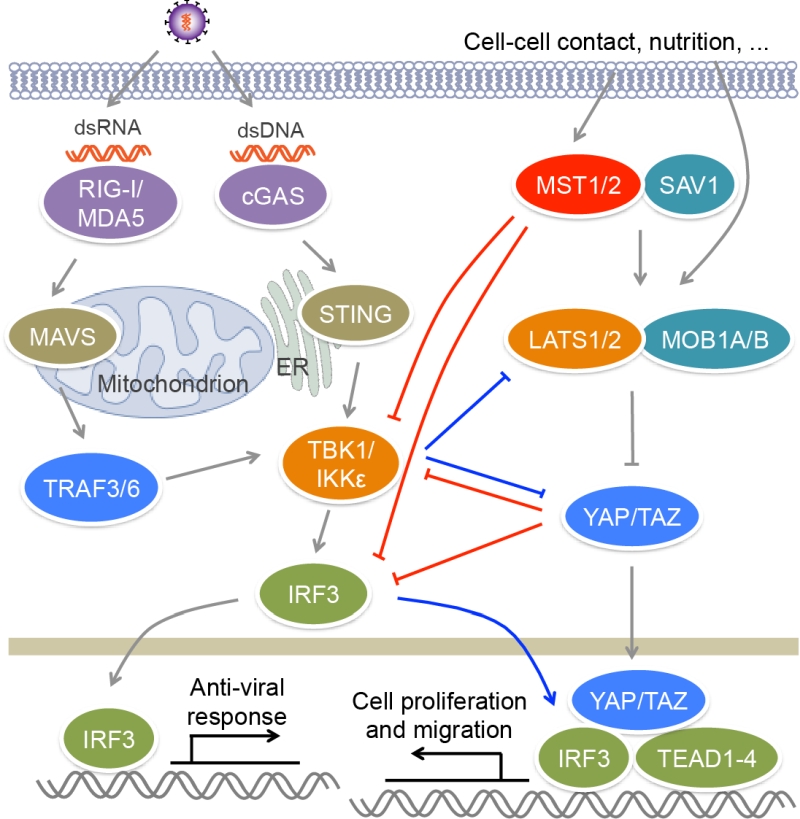Back to article: MST kinases in innate immune signaling
FIGURE 2: MST kinases and Hippo signaling regulate antiviral signaling. Upon viral infection, RIG-I/MDA5 and cGAS recognize viral dsRNA and dsDNA respectively, and activate TBK1/IKKε via adaptors MAVS and TRIF, as well as E3 lig-ases TRAF3/6, leading to the activation of IRF3 and the production of IFNs. MST1 can phosphorylate and suppress the activation of IRF3, as well as TBK1, to impair antiviral response. The downstream effectors YAP/TAZ of the Hippo pathway also negatively regulate antiviral signaling through inactivating TBK1 and IRF3. Viral infection induces the phosphorylation and degradation of YAP by IKKε, relieving its inhibitory role in antiviral immunity. IKKε can also induce the ubiquitination and degradation of LATS1/2 in glioblastoma multiforme cell lines, causing YAP activation. In addition, IRF3 can promote YAP−TEAD-driven gastric caner growth.

